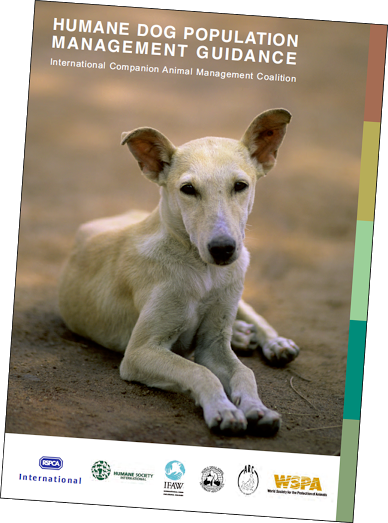 The essence of this guide is that there is no single intervention that can be used to solve the dog ‘problem’. In each location, dogs cause and experience different problems for different reasons, dog ownership practices can also vary significantly, and hence the interventions required to tackle these problems will also necessarily be different. The guide aims to help people through a process of stakeholder collaboration, initial assessment of the dog population and then analysis through the lenses of several important factors. This leads to a level of understanding that supports design of the most effective and resource-efficient approach to managing the population in a humane manner.
The essence of this guide is that there is no single intervention that can be used to solve the dog ‘problem’. In each location, dogs cause and experience different problems for different reasons, dog ownership practices can also vary significantly, and hence the interventions required to tackle these problems will also necessarily be different. The guide aims to help people through a process of stakeholder collaboration, initial assessment of the dog population and then analysis through the lenses of several important factors. This leads to a level of understanding that supports design of the most effective and resource-efficient approach to managing the population in a humane manner.
The guide took its inspiration from several related texts, not least the WHO/WSPA (1990) Guidelines for Dog Population Management. It also shares many of the concepts outlined in the OIE standard on Stray Dog Control that was adopted in 2009 (Chapter 7.7 of the Terrestrial Animal Health Code), our DPM guide works well as a companion to the OIE standard.
Nearly a decade later, we are ready to improve on the contents of this DPM guide and also add tools where they are needed. But before we do this, we would like to hear from people that have used this guidance previously so we can best meet our audience’s needs. We have developed an online survey to capture your feedback, however if you would rather describe your experience via an email or Skype conversation please contact our Scientific Coordinator on This email address is being protected from spambots. You need JavaScript enabled to view it..
Thank you for being part of this development by providing your input.
Dr Elly Hiby
ICAM Coalition Scientific Coordinator
